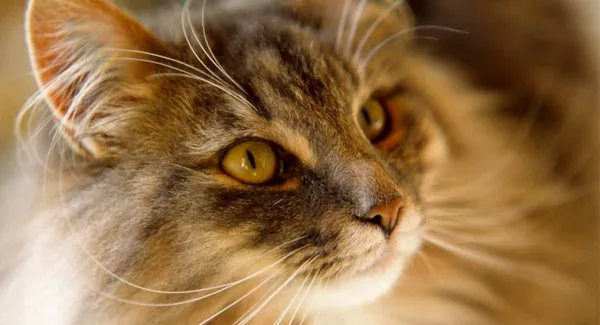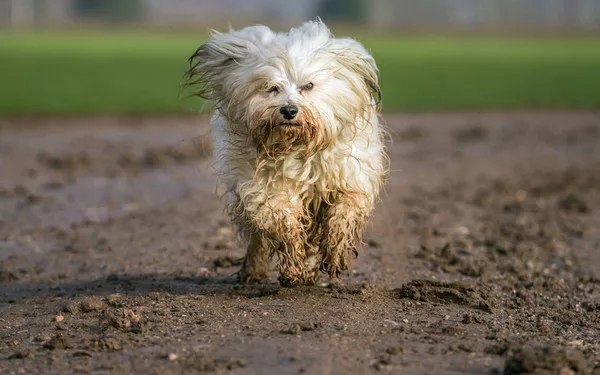Norwegian Forest Cats, often referred to as “Wegies,” captivate cat enthusiasts worldwide with their majestic appearance and enchanting personalities. These feline wonders boast a rich history deeply rooted in Norway, earning them the distinguished title of Norwegian Forest Cats. In this article, we will explore the origins, characteristics, and unique traits that contribute to the enduring appeal of these magnificent creatures.
Historical Roots: Navigating the Feline Saga
To comprehend why these cats are specifically labeled as Norwegian Forest Cats, one must delve into the annals of history. The breed’s origins trace back hundreds of years, intertwining with Norwegian folklore and seafaring tales.
Norway, with its rugged landscapes and harsh climates, has a storied history of seafaring communities. It is within this maritime setting that Norwegian Forest Cats made their mark. These cats were valued companions on Viking ships, where they played a crucial role in controlling rodent populations, protecting valuable food supplies, and providing comfort to the sailors during long, arduous journeys.
As the Vikings explored and traded across Europe, these feline companions found themselves in various regions, each contributing to the unique characteristics of the breed we recognize today. However, it was in Norway that the cats truly thrived, adapting to the challenging terrain and climate of their homeland.
Physical Characteristics: A Symphony of Elegance and Strength
The nomenclature “Norwegian Forest Cat” is not just a geographical label but a testament to the breed’s adaptation to its native environment. These cats exhibit physical characteristics that showcase their resilience and strength in the face of the Norwegian wilderness.
One of the most distinctive features of Norwegian Forest Cats is their luxurious, dense double coat. This coat consists of a water-resistant outer layer and a soft, insulating undercoat, providing protection against the harsh Nordic elements. Their long, bushy tails, tufted ears, and large, expressive eyes add to their regal appearance, reminiscent of the wildcats that once roamed the Norwegian forests.
The Wegie’s robust build, strong legs, and tufted paws further emphasize its ability to navigate challenging terrains. These physical traits are not merely ornamental but serve as practical adaptations that have evolved over centuries, allowing the Norwegian Forest Cat to thrive in its natural habitat.
Why the Name? The Significance of ‘Forest’
The term “forest” in the breed’s name is not arbitrary; it speaks to the cat’s historical association with wooded landscapes. Norwegian Forest Cats became integral to the Norwegian ecosystem, playing a vital role in maintaining the balance of nature by controlling rodent populations that could otherwise devastate crops and food supplies.
Their agility in climbing trees, a skill developed over generations, further reinforces the connection between these cats and their forested origins. In Norwegian folklore, these cats were often depicted as mystical creatures, guardians of the forest who brought good fortune to those they encountered.
While the term “forest” may conjure images of dense woodlands, it encompasses the broader notion of nature and the outdoors. Norwegian Forest Cats are not just indoor companions; they retain a deep-seated affinity for the natural world. Even in domestic settings, they often display an innate desire to climb, explore, and engage with their environment, echoing the spirit of their ancestors in the Norwegian wilderness.
Temperament: Gentle Giants with a Playful Spirit
Beyond their captivating appearance and historical significance, Norwegian Forest Cats are cherished for their amiable and gentle nature. Their temperament reflects their adaptability to both outdoor and indoor environments, making them suitable companions for various lifestyles.
These cats are known for forming strong bonds with their human families, displaying loyalty and affection. While they may possess a majestic presence, Norwegian Forest Cats are often described as “gentle giants.” Their large size and robust build do not diminish their graceful and refined demeanor. They are known to be patient with children and get along well with other pets, making them ideal additions to households with diverse family structures.
A distinctive trait of Wegies is their playful spirit that endures well into adulthood. Their love for climbing and exploring is not just a nod to their historical roles but a manifestation of their energetic and curious personalities. Providing them with vertical spaces, such as cat trees and shelves, allows them to indulge in their natural instincts, contributing to their overall well-being and contentment.
The Wegie Renaissance: Recognition and International Appeal
While Norwegian Forest Cats have deep roots in Norway, their global recognition as a distinct breed gained momentum in the mid-20th century. Dedicated breeders and enthusiasts worked tirelessly to preserve and promote the unique qualities of these cats, leading to their acceptance by international cat breeding organizations.
See Also:Do Norwegian Forest Cats like Water?
The Wegie’s rise to prominence was further fueled by their appearances in various media, including films, advertisements, and even as the official cat of the 1994 Winter Olympics in Lillehammer, Norway. Their striking appearance and enchanting demeanor captured the hearts of cat lovers worldwide, sparking a renaissance for the breed.
Today, Norwegian Forest Cats are recognized by major cat breeding organizations, such as The International Cat Association (TICA) and the Cat Fanciers’ Association (CFA). Breed standards emphasize not only their physical characteristics but also their temperament, ensuring that the essence of the breed is preserved across diverse breeding programs.
Genetic Diversity and Health Considerations
Maintaining the genetic diversity of Norwegian Forest Cats is crucial for preserving the breed’s resilience and preventing hereditary health issues. Responsible breeding practices, including genetic testing and screening for common feline ailments, contribute to the overall well-being of these majestic cats.
Despite their robust constitution, Norwegian Forest Cats, like any breed, may be prone to certain health conditions. Regular veterinary check-ups, a balanced diet, and an enriching environment are essential components of their care. The global community of Wegie enthusiasts collaborates to share knowledge and promote responsible breeding practices, ensuring the long-term health and vitality of the breed.
Conclusion: Embracing the Legacy of Norwegian Forest Cats
In conclusion, the nomenclature “Norwegian Forest Cats” is a reflection of the breed’s storied history, physical characteristics, and enduring connection to the natural world. Their journey from Viking ships to global recognition showcases their adaptability and charm. These regal felines continue to enchant cat lovers with their majestic appearance, gentle demeanor, and playful spirit.
As stewards of the Wegie legacy, it is our responsibility to celebrate and preserve the unique qualities that define this extraordinary breed. Whether they are climbing trees in the Norwegian wilderness or perched atop a cat tree in a modern living room, Norwegian Forest Cats remind us of the enduring bond between humanity and the animal kingdom. In embracing their legacy, we honor not only the feline companions that sailed with the Vikings but also the mystical guardians of the forest that continue to grace our homes with their enchanting presence.
Related Topics:
Are Norwegian Forest Cats Good Pets?
Best Food for Norwegian Forest Cats
Can Norwegian Forest Cats Be Indoor Cats?



























